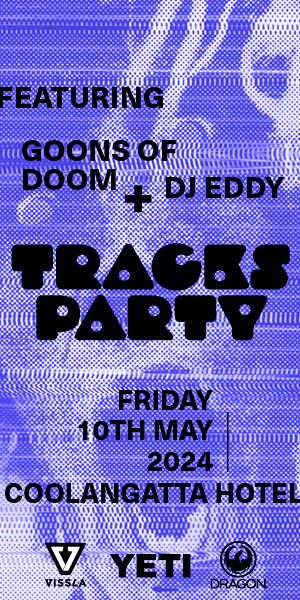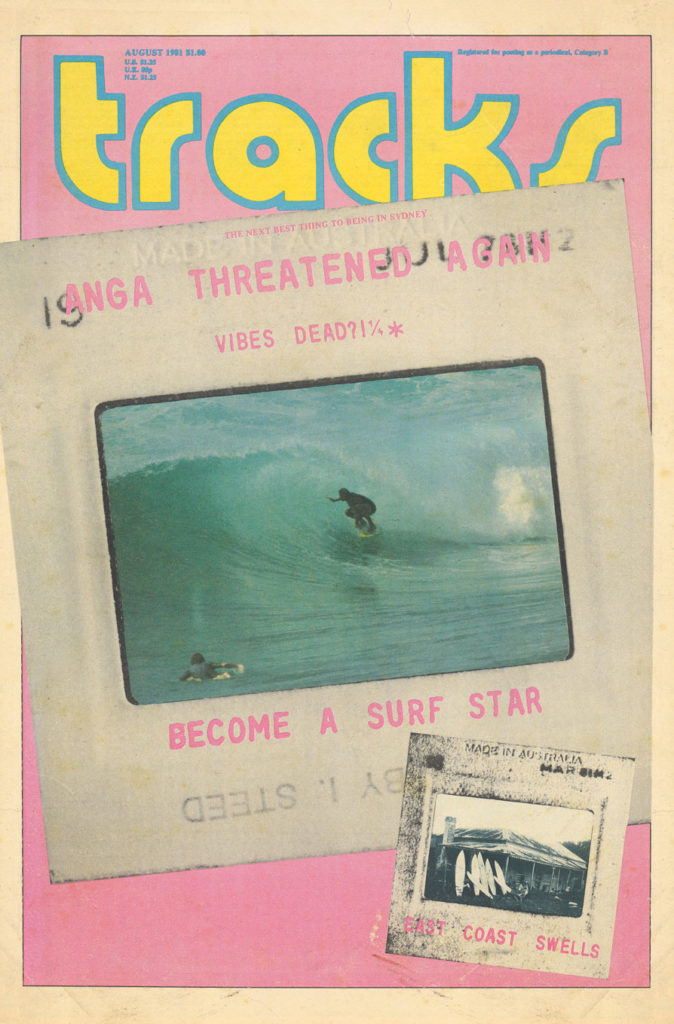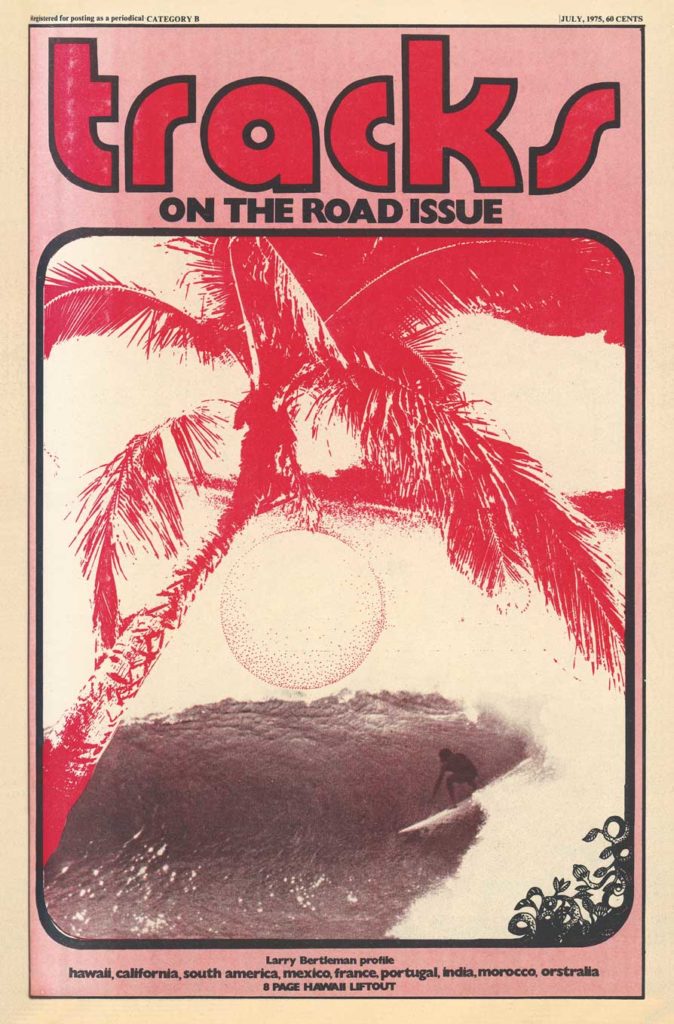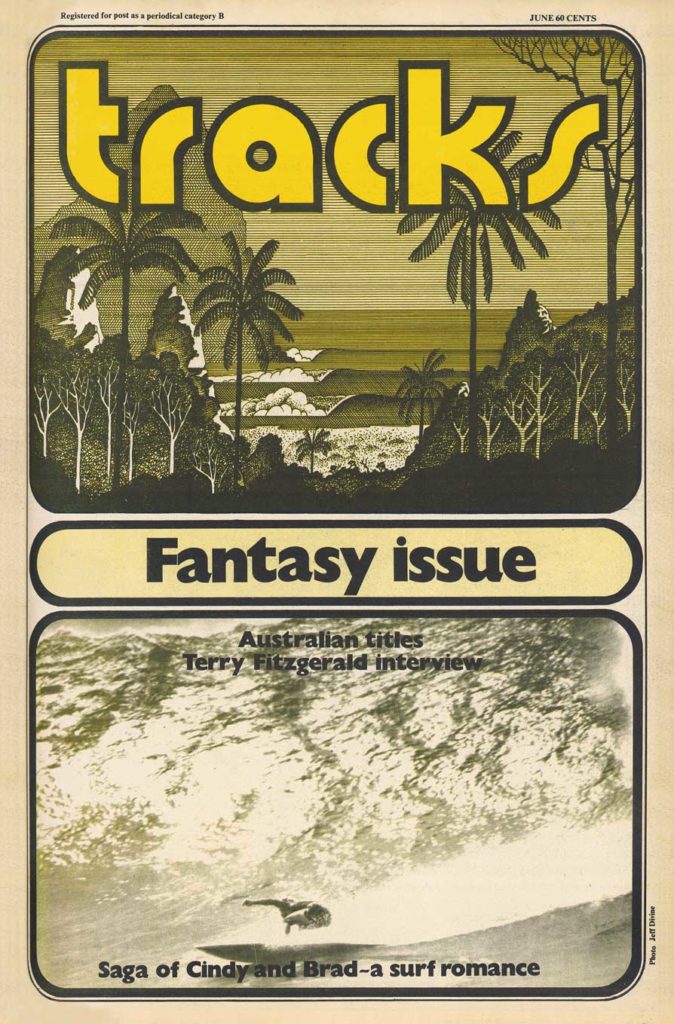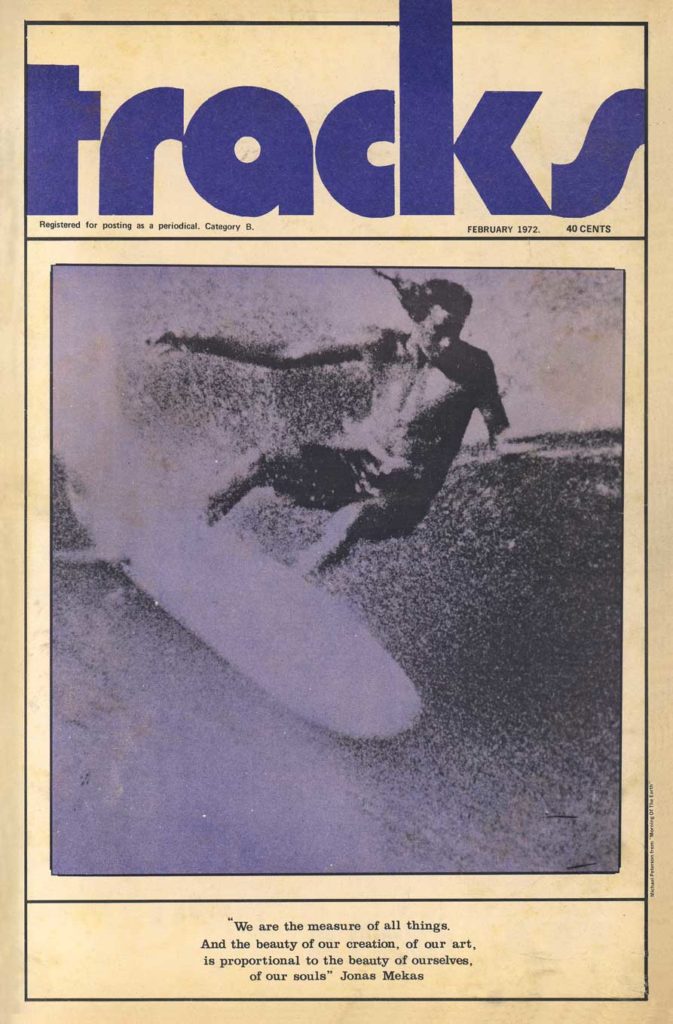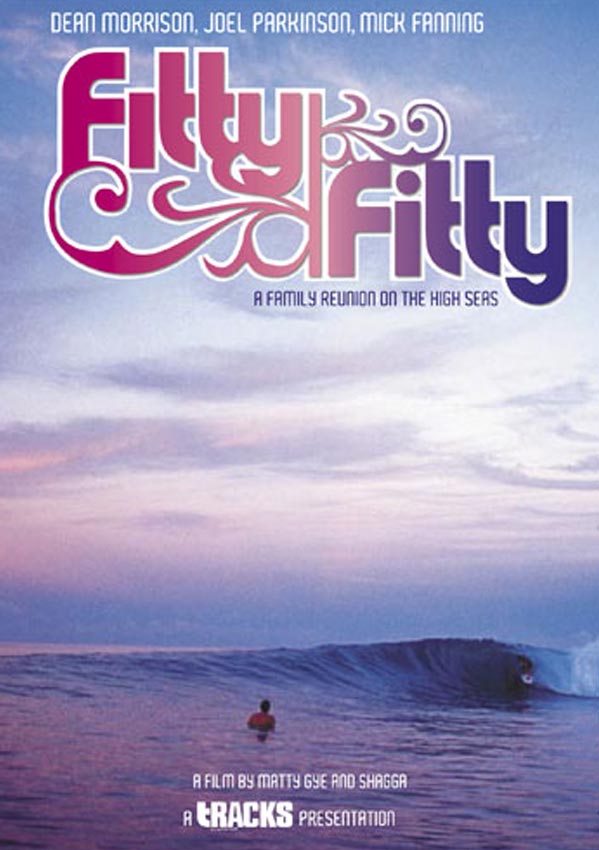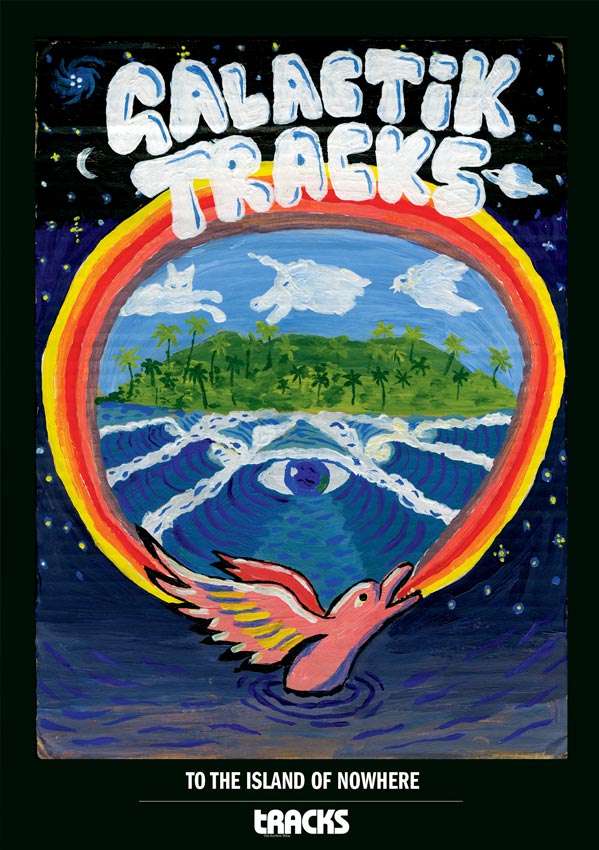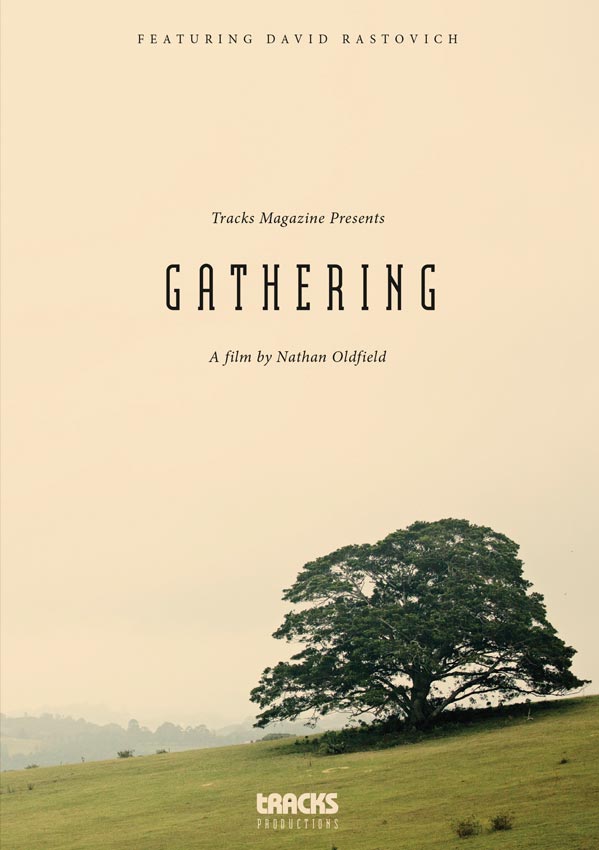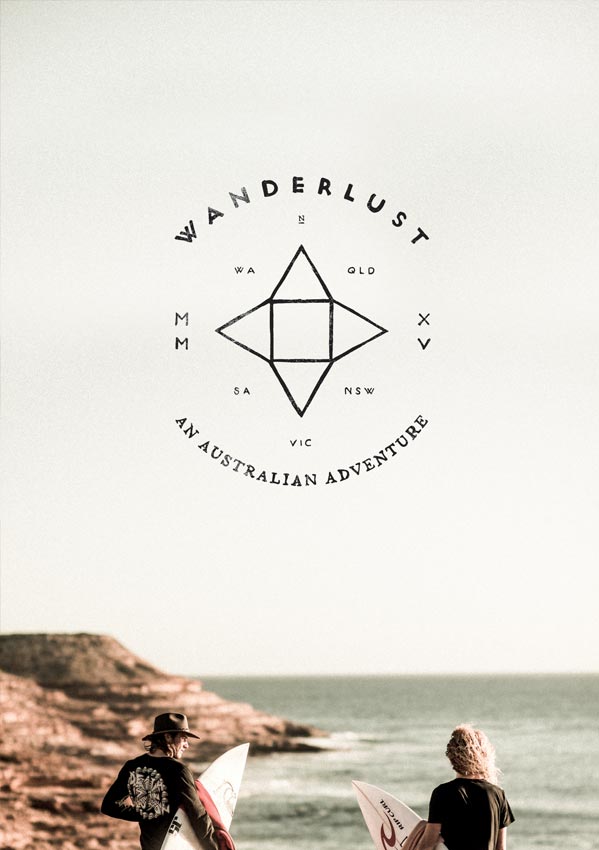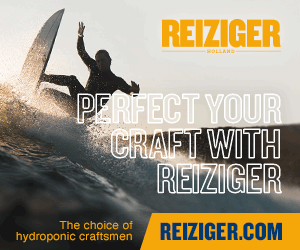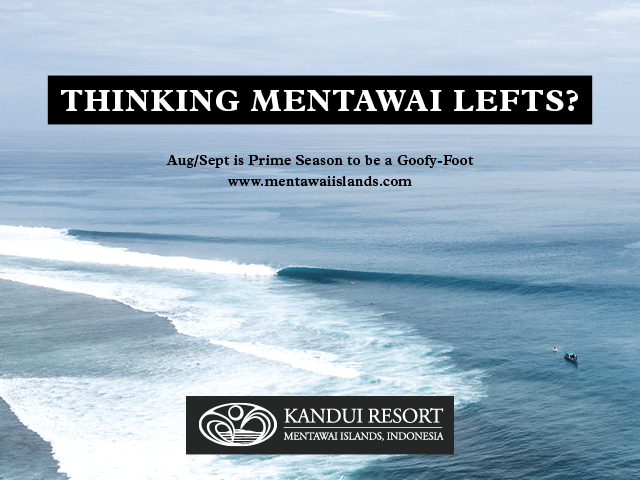From Issue 585
Issue available on stands now or subscribe to read more Tracks premium content
.Jim Banks understands what a good board means to a surfer ” one of the things about being a shaper is that in a sense we have a responsibility for someone’s happiness,”Explains the 62-year old surfer/ craftsman.
“I take that as a very serious responsibility… If someone buys a board off me, I want to make sure that it’s something that they’re gonna love and it’s gonna make them happy. Because I know what it’s like to have a board that you’re not happy with. It sucks.”
Driven by autodidactic tendencies (he also makes his own guitar amps), Jim taught himself to shape in 1971, when he was 12. He started on single fins, was there when MR ushered in the twins and was still on tour in 1981 when Simon Anderson unveiled his thruster. As a shaper, Banksy has explored almost every design trend and innovation over the last half a century and his current suite of models clearly reflects his diversity and experience as a shaper. His design files feature everything from single fins to super-sized twin fin gliders and his fabled Indo guns.
Banksy’s shaping act was always underpinned by his reputation as a world-class surfer. He was a member of the pro tour in the late 70s and early 80s with a career best finish of 14th in 1980. His competitive high point was a victory in the Om-Bali Pro in 1981. “On a twin fin,” he points out. However, hustling through heats at Huntington was never really going to satisfy Jim’s broader surfing tastes.
Through the late 80s and 90s Banksy became better known for exploring isolated regions of Indo and needling his 7’0” guns through gaping barrels. These days, Jim lives on Bali’s Bukit peninsular and riding his own craft in a variety of waves around Indonesia remains an integral part of the research and design that goes into his boards.
I travelled to Grajagan with Jim back in 2005, where he was already reading the tea leaves on the revived interest in twin keel fish designs. When Kelly Slater recently expressed an interest in getting a few boards from Jim he was inspired to develop his own high-performance version of the keel fin, which he calls the ‘Hooker’.
Tracks caught up with Jim to talk about his evolution as a shaper, his latest creations and the ones he personally loves to ride the most.
You’ve been riding and shaping the keel fin fish for the last 15 years. What turned you on to the program?
Well, Steve Lis had come to Byron and was shaping some boards. I didn’t know anything about it. And one of my mates had been here with Steve and so he made his own version. And I saw him down the beach with it. And I was like, making fun of him. Like ‘what the fuck is that?’ You know? Yeah. And looking at the parallel plan shape, the massive swallow tail, the weird-looking fin and the low rocker. Everything I knew about surfboard design told me that that board would surf terrible. Yeah. And so I’m making fun of him. And he’s like, ‘no, no, it goes really good’. And he said to take it for a surf. So I paddled out and took off and yeah, it went f$%#ing fantastic. Really good. I was like, ‘shit, I need to make myself one of those. This is fun’.
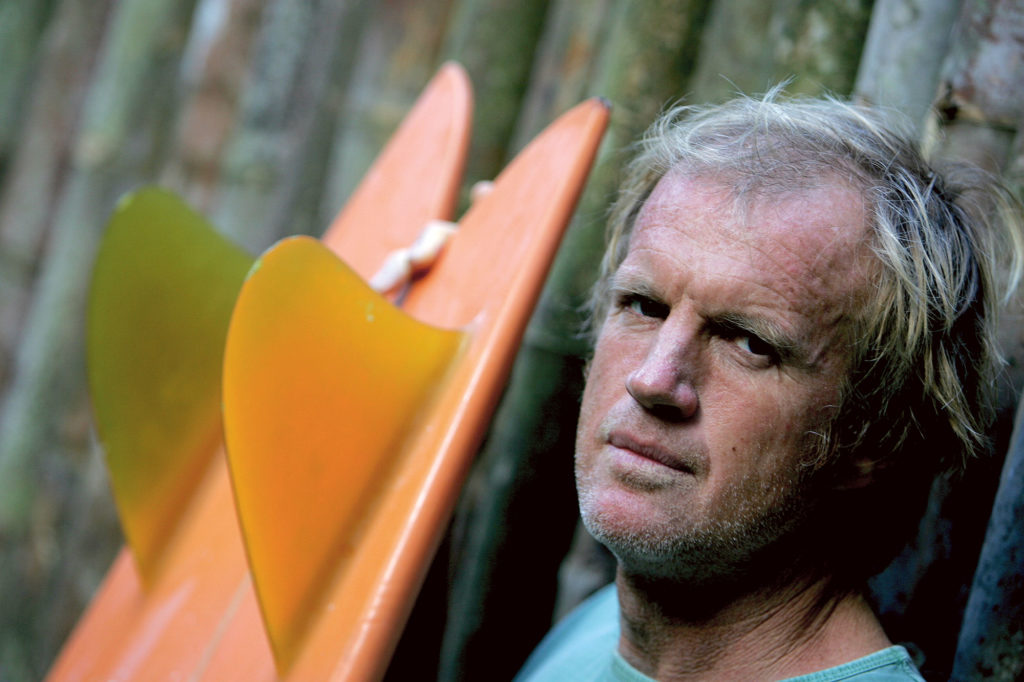
When you first started travelling through Indo in the early 80s, you probably wouldn’t have had the luxury of taking four or five boards?
I think I used to come to Indo with two or three boards. And quite often, it would just be three seven footers. Back in those days unless something had some kind of triple barrel, or some big, massive face I wasn’t really interested
Did you shape any twin fins when you were on tour?
I built a twin fin in 1981 and that was the year Simon came out with the thruster. So I pretty much only surfed the twin fin for a few months, and then it was straight onto the thruster, but I actually won the Bali OM here on a twin fin.
That’s an interesting bit of history.
I actually surfed Outside Corner on the twin fin, and it was, you know, decent sized. I think that’s the best surfing I’ve ever done at Outside Corner.It would have been like a six-foot board, or something, was it?Yeah, it was a six-footer, an MR-style twin fin which don’t have the stability and drive of the keels. The problem I found with MR-style twin fins, personally was that they were terrible on the backhand, and a lot of people had similar experiences. So that was a big revelation when I jumped on the keel fins, it was really solid under my feet. And I felt great on the backhand. I started building twin fins in Byron and so I was surfing, you know, Lennox on my backhand. And, you know, I needed something that was solid and powerful and driving. And the keels did that. I could never get that response from the MR-style ones. When the twin fins came back in the next question was, ‘Can you ride them in bigger waves?’ And then can you ride them in bigger waves on the backhand? That was sort of the next frontier? So that’s right. That’s what happened. You know, after surfing Yatesey’s one, I immediately made one for myself and, and that was so much fun in small surf, but I found that as I started riding them in bigger waves, I found myself nursing them and not getting the response I wanted. So that’s when all the work started you know. Tuning the plan shape and tuning the fins and tuning the bottom contours, the rocker; going through the whole thing to get them to a point where I could ride them in double overhead surf and push and them and they were solid under my feet.
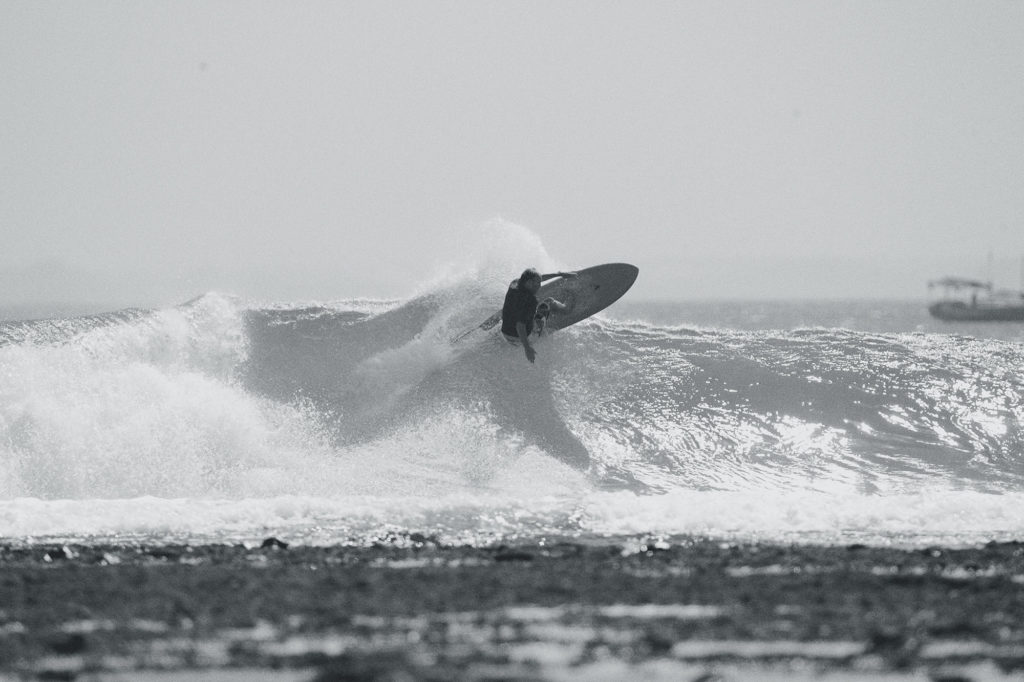
Is the twin keel a board of preference for you now? If you’re looking at solid waves, say for example Outside Corner?
Yeah, I mean ever since 2005, the keel has almost been my go-to board. I’ll ride them up to like double overhead at Ulu’s, depending on what it’s like. But you know, as a surfboard designer I need to keep in touch with my full range. So even though it’s my board of preference, I still go surf my pin tails and my quads and I’ll ride my thrusters every now and then just to check in on them. But I started making some bigger twin fin boards just like seven-foot, twin keels just to see how they would go. That kind of mid-length thing was kicking in and it was just for a bit of fun, you know? But of course, I was curious. So I surfed up the top of the reef here where it’s pretty chunky, pretty solid – double overhead. And I remember the very first wave, I took off and I came out to the shoulder, and I went to do a cutback and the thing just grabbed onto the face and pulled around so hard. I was shocked. I was like, ‘Holy shit, this twin keel has more drive, more power and more hold than my quad guns. So yeah, that was a real revelation. So you know, last year at the Bommie here, I was riding a nine-foot twin fin. Because at the bommie here at Ulu’s, you need so much speed sometimes. And I could feel with the quads that I was still getting too much drag on the face.
I guess what goes through a lot of people’s heads is the idea that if I’m on a 10 or 12-foot wave, or even a six-foot wave, and I’m leaning into a bottom turn on a twin fin, is it going to skip out? That’s still the fear for a lot of people I guess.
Well, that’s exactly what I thought. When I made the seven-footer, I expected it to be a little bit drifty and a bit skittish… And that’s what shocked me was it actually had more hold and more control than my quads. Yeah, that’s the last thing I expected, it was the opposite of what I expected.
I was looking on your website and it seems you’ve gotten into refining the fin itself?
Yes, we still have our like, you know, classic sort of keel shapes, which are really nice, but I find in the bigger waves, they load up too much. Too much load on the fins…. Our hooker fin, which is our sort of a tweaked, modified hybrid, keel came about when Kelly visited and wanted some boards. And so I had to really think ‘how can I get more performance from my keel fin for Kelly?’ That’s where that started. I originally designed that for Kelly but as I started playing around with it myself, I found that it works really good for the bigger boards and the bigger wave.
So how do you make a keel fin more performance orientated? What do you do to it?
So here’s a really interesting thing with keels. Here’s some mathematics. If you’ve got a thruster, which I think is still the standard reference board. You’ve got three fins, with a four-and-a-half-inch base, right? So you’ve got a total fin base of 13 and a half inches… But with a keel, you’ve still got your 13 or 14 inches of fin base… So the base is really where the drive and the stability comes from and so the thing was, like, I needed to keep that drive and stability, but I wanted more response. Yeah. So I made a finer tip. And the tip of the fin is more like a conventional fin.
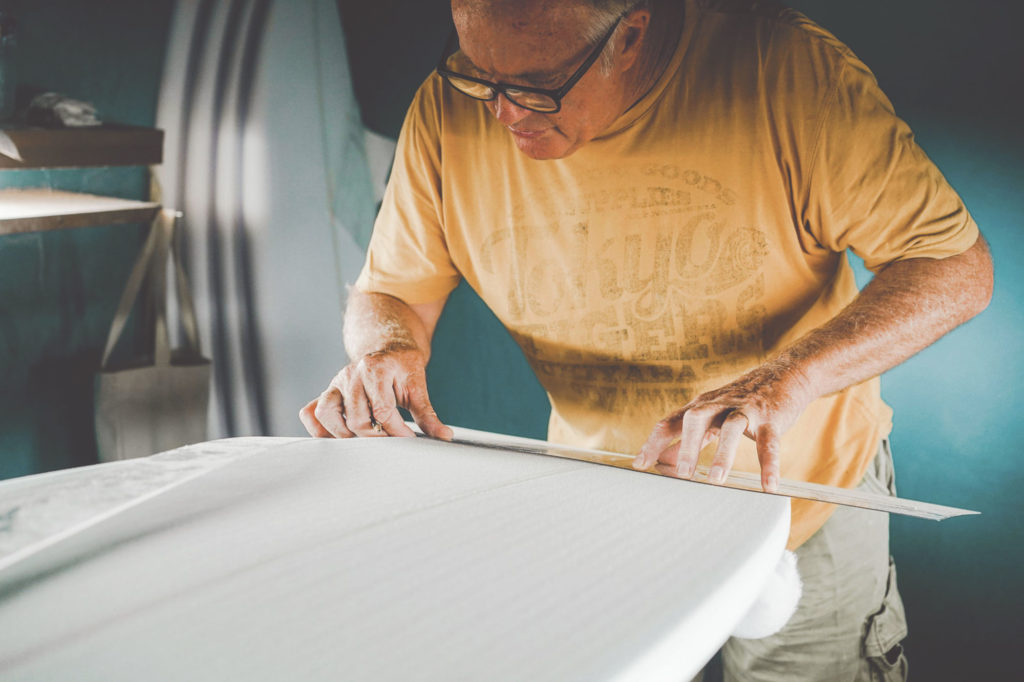
I think some people have this picture in their head of someone just high lining on a wave on a twinny and not doing much, but the reality is you can actually really surf them?
Exactly, it’s a bona fide authentic high-performance thing. We make some boards here for some of the local boys. Blackie, he’s like one of the best surfers here and he just won the last Uluwatu surfboard riders on a twin keel. He out surfed all the boys on their thrusters on his pin tail, twin fin keel we made him. We also made Mitch Colburn a couple of boards. He’s a real powerful surfer. We made him a couple of pin tail, keel fin boards. He said he loved the seven-footer, but the six-footer he said it had more drive than any board he’s ever surfed.
Fifty years after you started shaping, it sounds like the pursuit of the perfect board, or the better board is still a challenge for you.
|I’ll get an idea and I’ll be like, ‘Oh, I might try this. And you’re like, ‘holy shit, I didn’t think this could be any better’. And now it goes better. So yeah, that’s what keeps me going. It’s an adventure and a discovery of like … try this and see what happens… There is this constant element of surprise with building surfboards. You think you’ve built something for this. And it does do that. But then it does this whole other thing that you’d never expected.
Do you think the average surfer has to get away from the idea of watching the CT and thinking exclusively in those terms when it comes to surfboards? That surfing is instead, by virtue of the range of boards available, a pursuit that offers a series of distinctly different sensations?
Yeah, look, I think that the whole pro competitive thing has controlled the mindset for a really long time. And I think it’s created a situation where a lot of people are surfing from their mind rather than from what they’re feeling and forcing and pushing it and being busy and waving their arms and trying all these manoeuvres. I’m guilty of it. I did it when I was younger on the pro tour. But you know, I think that’s been the beauty of the whole retro movement. It’s like, ‘Hey, look, I don’t have to rip. I can just go have fun.’ It’s like, you know, I still love barrels, and I’ve had a million. I’ve probably had more barrels than most people, but these days, you know, a lot of times, I’m just happy to feel the glide. Yeah. Just that beautiful simplicity of just gliding along the face of the wave and getting some nice swoops. It’s such a beautiful feeling….. You know, combining all that glide that a mid-length naturally has. And then you combine that with all the glide of a keel and it’s like ‘Wow, you’ve really got some serious glide going on when you add that.
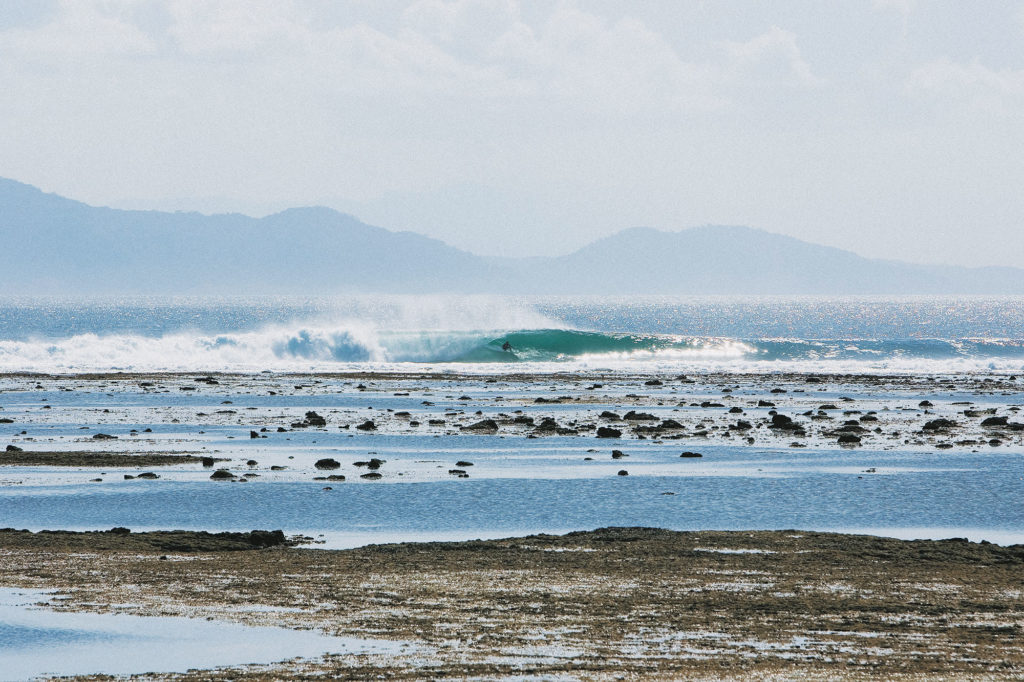
Obviously you’ve embraced the retro movement, but you’re across the concept of the contemporary shortboard as well. Sometimes the surfing public gets scared if they see someone shaping twin fins and single fins. Then they go, ‘Oh, I can’t get a performance board off that person because they are just a retro shaper. Does a good shaper have the scope to do it all?
I think if the shaper has done their homework, Yeah. I know there are some shapers who build retro boards, but they don’t surf them because they consider performance to be an issue. So there is a bit of this thing where a shaper is just producing something that looks like the real deal.
I mean, that’s why I have such a wide range of surfboards… I’m building everything from six-foot fishes to nine-foot guns and 5’10” performance boards. The issue I have, is it’s a hell of a lot of work to keep them all updated… And these days, you know, with the refinement that we can do with the computer designing, we can get the board so refined, that if it’s a good board, that’s not enough. Because I know if I keep working at it, I can get to a point where it’s a magic board. And then every one we make is a magic board, you know. But it does takes a hell of a lot of work.
By the same token, can retro board enthusiasts become too narrow and concerned with image also? You can ride the full cross section of boards if you want to. There’s no rule against that. And you’re probably better off if you’re open to that concept.
If someone’s locking themselves into a narrow genre then it’s really limiting. Surfing is sort of all-encompassing really. If you’re really a surfer, then you want to be experiencing the full surfing experience; everything from body-surfing to hand planing to, you know, twin fins. And yeah, like you say, performance boards – the whole deal.

